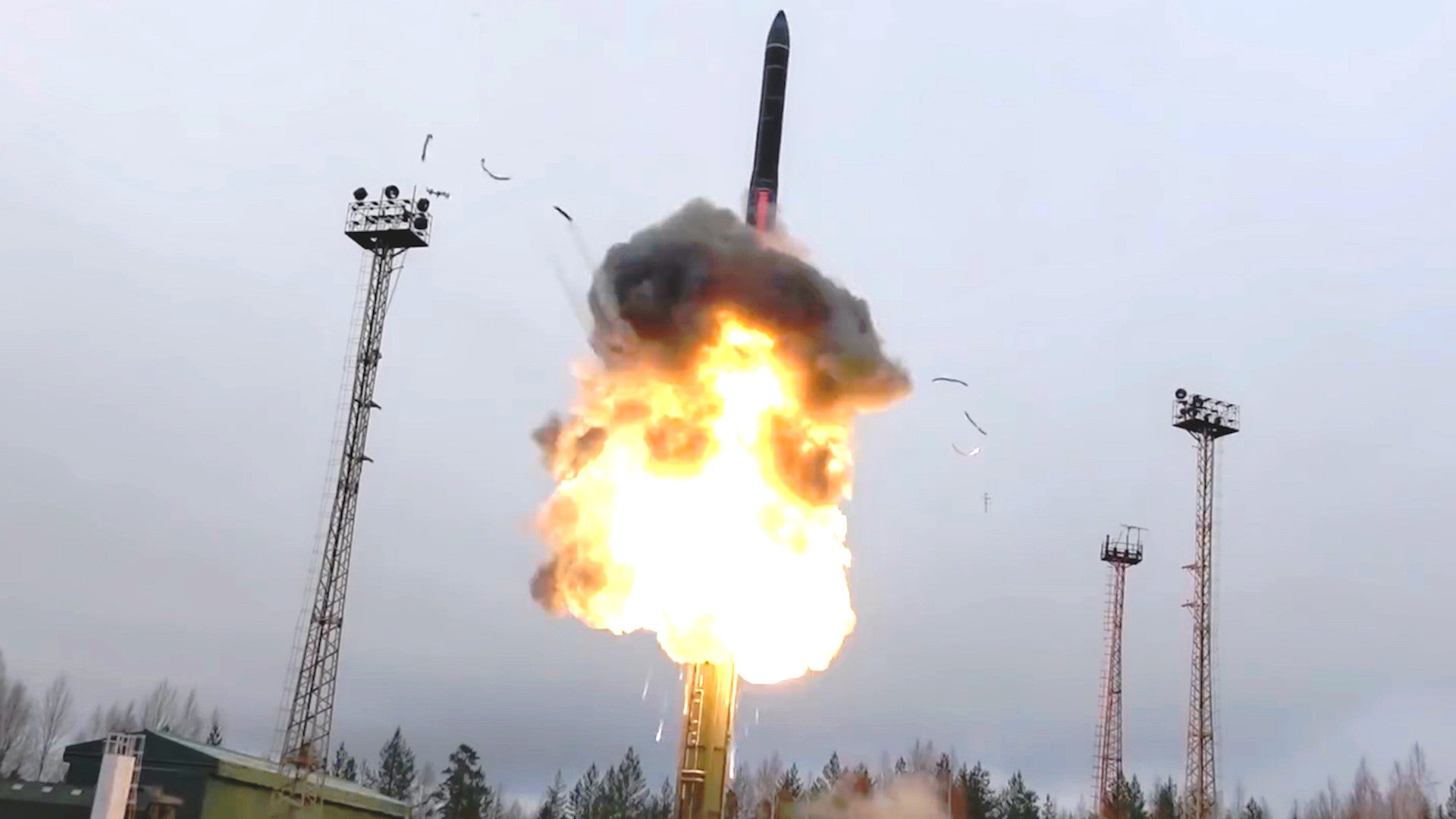Readouts of the first call between Joe Biden as U.S. President and Russian President Vladimir Putin today show a clear commitment to extending the New Strategic Arms Reduction Treaty, or New START, as is and without any apparent preconditions, for another five years. This deal, which is otherwise set to expire next week, places hard limits on the total number of strategic nuclear weapon delivery systems, as defined by the agreement, as well as the warheads that they carry, that each country can possess. Without this arrangement in place, there would be nothing to stop the two countries from engaging in a new nuclear arms race.
The White House’s statement about the details of the call says the two leaders also discussed the situation in Ukraine, the Russian-linked SolarWinds hack, intelligence indicating the Russian government placed bounties on U.S. troops in Afghanistan, Russian interference in the 2020 Presidential and Congressional elections in the United States, the attempted assassination of now-jailed Russian dissident Alexei Navalny. The Kremlin’s press release makes no mention of any of those issues. It does bring up the matters of the Open Skies Treaty and the controversial agreement over Iran’s nuclear program, both of which President Donald Trump had withdrawn from. Russia remains party to the Iran Deal, which the new Biden Administration has also expressed an interest in rejoining, but recently announced that it would also be pulling out of Open Skies.
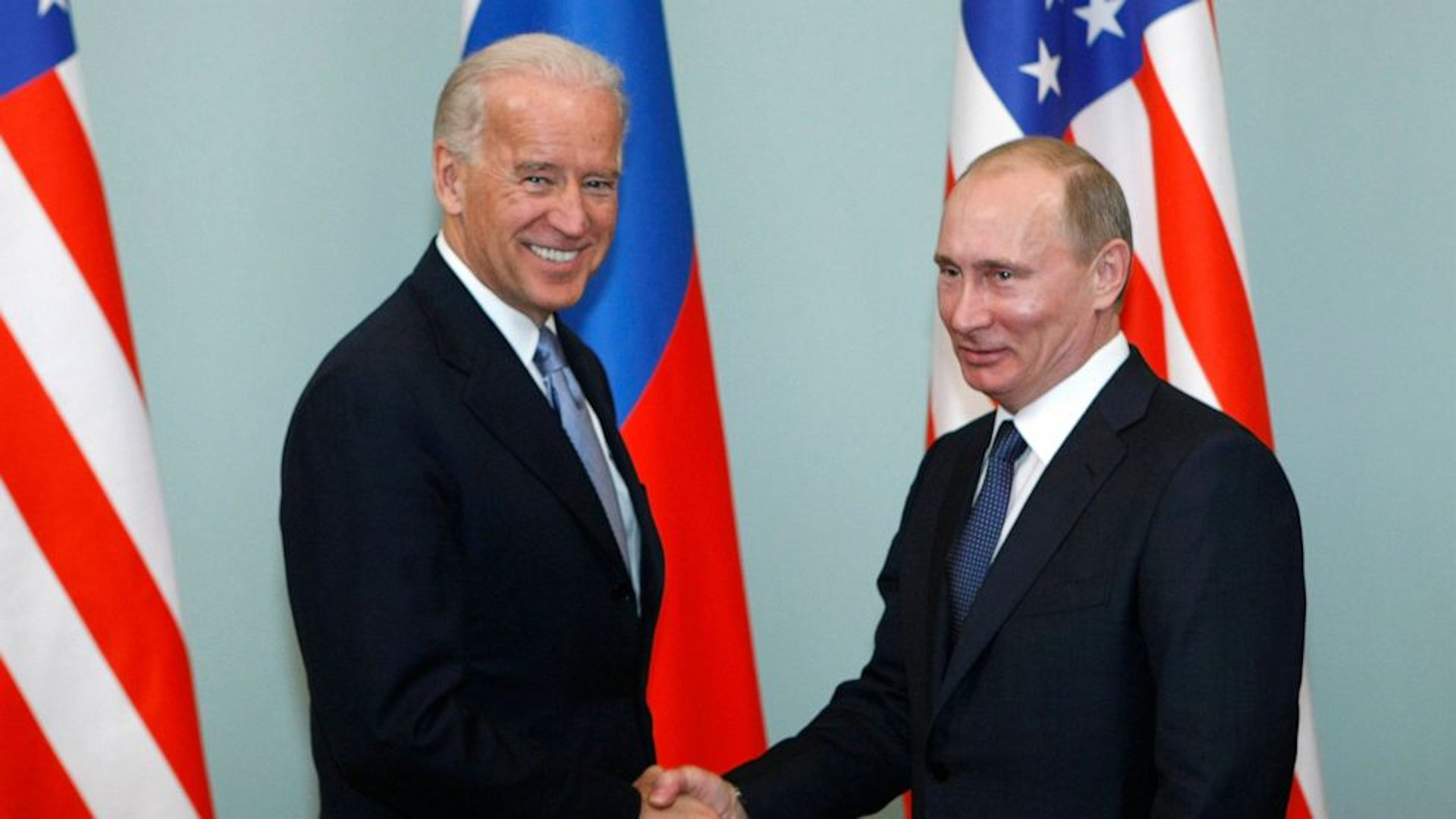
New START was clearly a primary focus of the call. Both official readouts mention Biden and Putin’s discussion of this treaty first and provide more detail about the diplomatic work going on around that deal than to any of the other topics. Reports that an agreement on a five-year extension was in the works had first emerged last week.
“They discussed both countries’ willingness to extend New START for five years, agreeing to have their teams work urgently to complete the extension by February 5,” the White House’s statement says.
“The Presidents expressed satisfaction in connection with the exchange of diplomatic notes carried out today on reaching an agreement on the extension of the Treaty on Strategic Offensive Arms,” a translation of the Kremlin’s readout adds. “In the coming days, the parties will complete all the necessary procedures to ensure the further functioning of this important international legal mechanism for the mutual limitation of nuclear missile arsenals.”
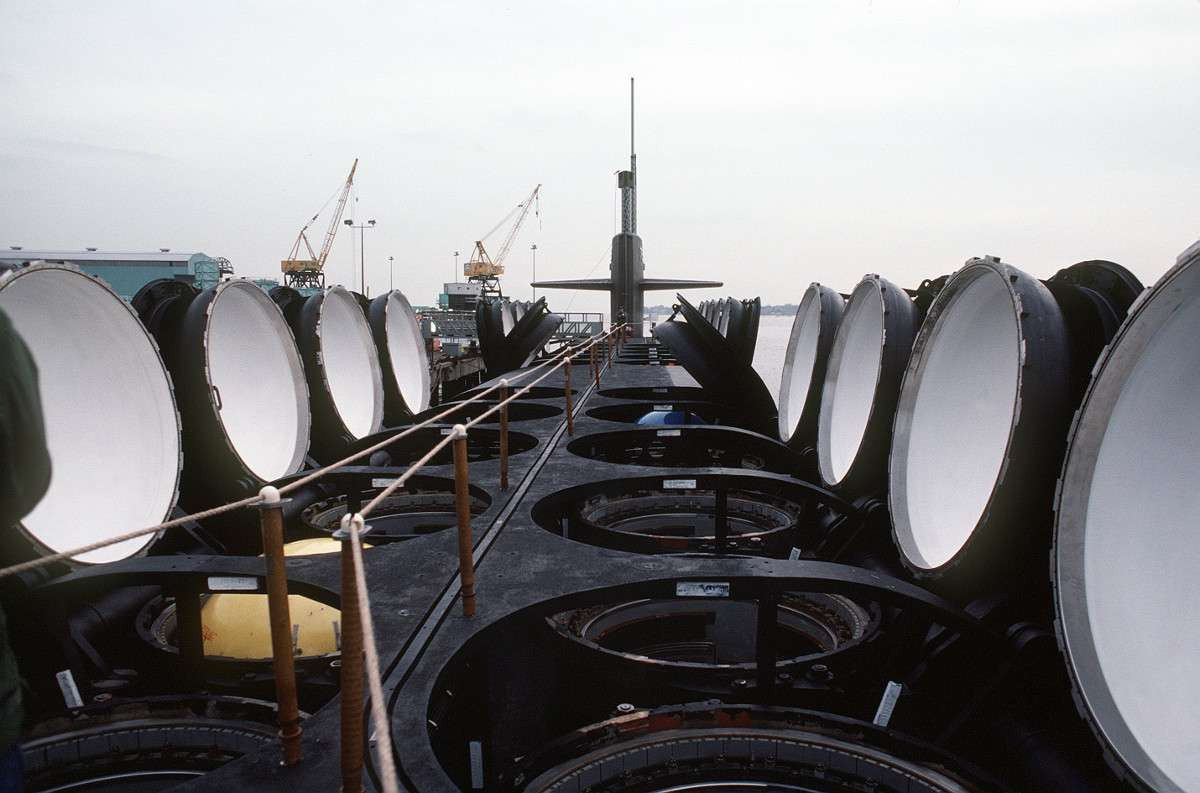
The Kremlin’s comments about the exchange of diplomatic notes and the parties moving ahead to formalize the five-year extension of New START are further confirmed by the website of Russia’s parliament, or Duma. Today, a legislative package regarding the ratification of this modification to the treaty, which includes copies of the diplomatic notes, was posted on that site. In the United States, Congress does not have to approve the extension.
“On behalf of the United States of America, the Embassy proposes that the duration of the Treaty be extended for a period of five years, until February 5, 2026, pursuant to paragraph 2 of Article XTV of the Treaty,” the note from the U.S. Embassy in Moscow says. “If this proposal is acceptable to the Russian Federation, the Embassy proposes that this note, together with the Ministry’s note in reply to that effect, shall constitute an agreement between the United States of America and the Russian Federation to extend the Treaty that shall enter into force on the date of the later note in an exchange of notes between the Parties confirming that any internal procedures necessary for the entry into force of this agreement have been completed.”
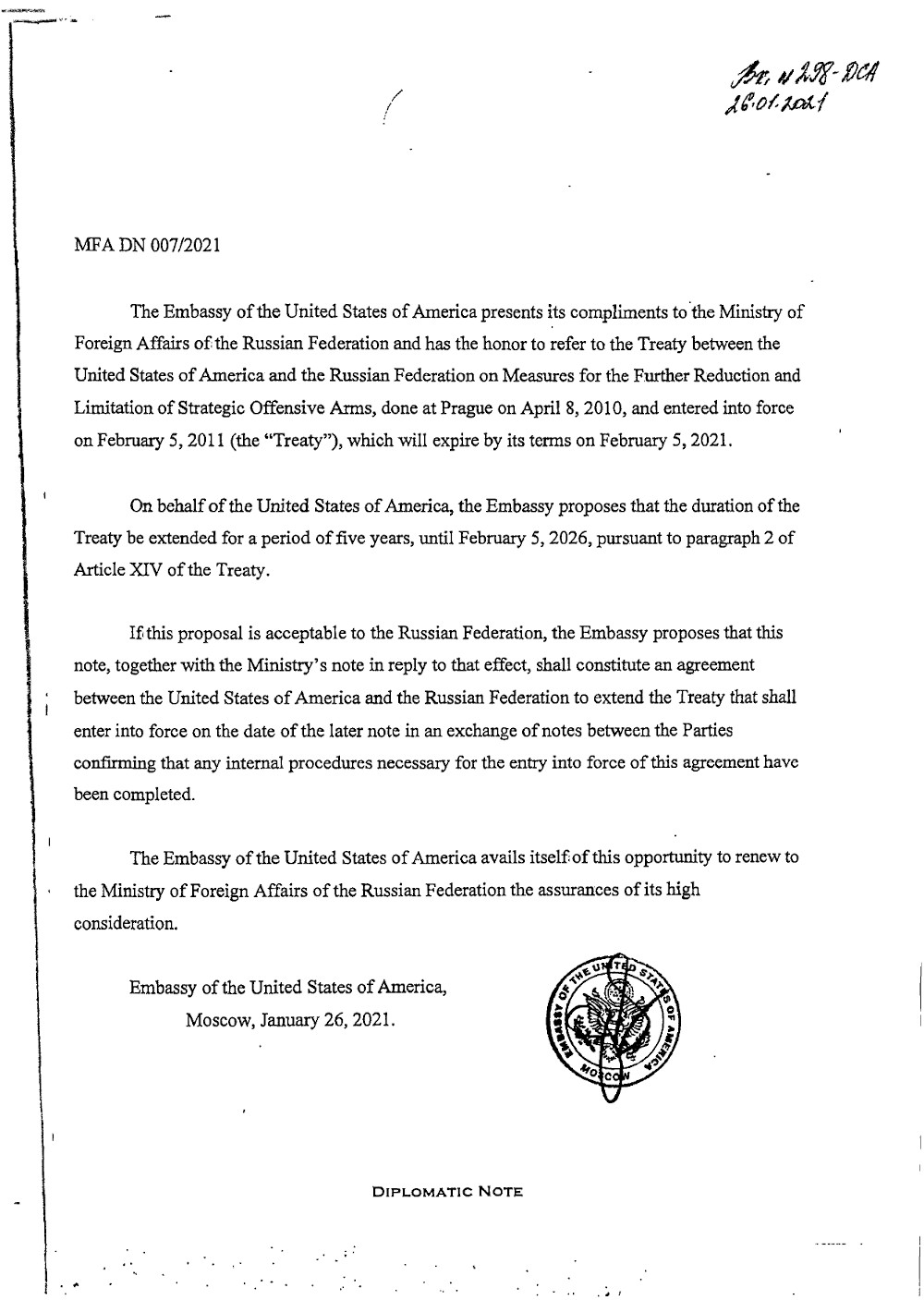
On Apr. 8, 2010, then-President Barack Obama and his Russian counterpart at the time, Dmitry Medvedev, signed New START, which subsequently entered into force on Feb. 5, 2011. The deal’s three key provisions are as follows:
- Neither country may have more than 700 intercontinental ballistic missiles (ICBM), submarine-launched ballistic missiles (SLBM), and nuclear-capable heavy bombers deployed at any one time.
- Both sides cannot have more than 1,550 deployed nuclear “warheads,” with heavy bombers, as well as individual re-entry vehicles on ICBMs and SLBMs, each counting as one warhead.
- No more than 800 deployed and non-deployed bombers, as well as ICBM and SLBM “launchers,” the latter of which include silos, road-mobile launchers, and individual launch tubes on ballistic missile submarines.

As referenced in the U.S. Embassy’s diplomatic note, the treaty has always included a provision for a five-year extension without preconditions. However, the Trump Administration and the Kremlin had been locked in negotiations over a host of issues, including debates over extending the deal to cover certain new, novel nuclear weapons Russia has been developing, such as the Poseidon nuclear-powered torpedo and the Burevestnik nuclear-powered cruise missile. There had also been a desire on the U.S. government side to somehow pull China, which has a growing strategic nuclear arsenal, into the New START framework as a potential path to a future trilateral nuclear arms control deal.


By October 2020, the Trump Administration had shifted to pushing for an extension of the existing deal, but with a demand that Russia agree to a total freeze in the total number of nuclear warheads on both sides. As of Dec. 1, 2020, per the U.S. State Department, the United States had 1,457 deployed warheads, per New START’s definitions, while Russia had 1,447.
Russia had countered with an offer to agree to a one-year extension with no preconditions. Both sides now appear to be moving forward quickly to formalize an agreement regarding the full five-year extended term as outlined in the original treaty.
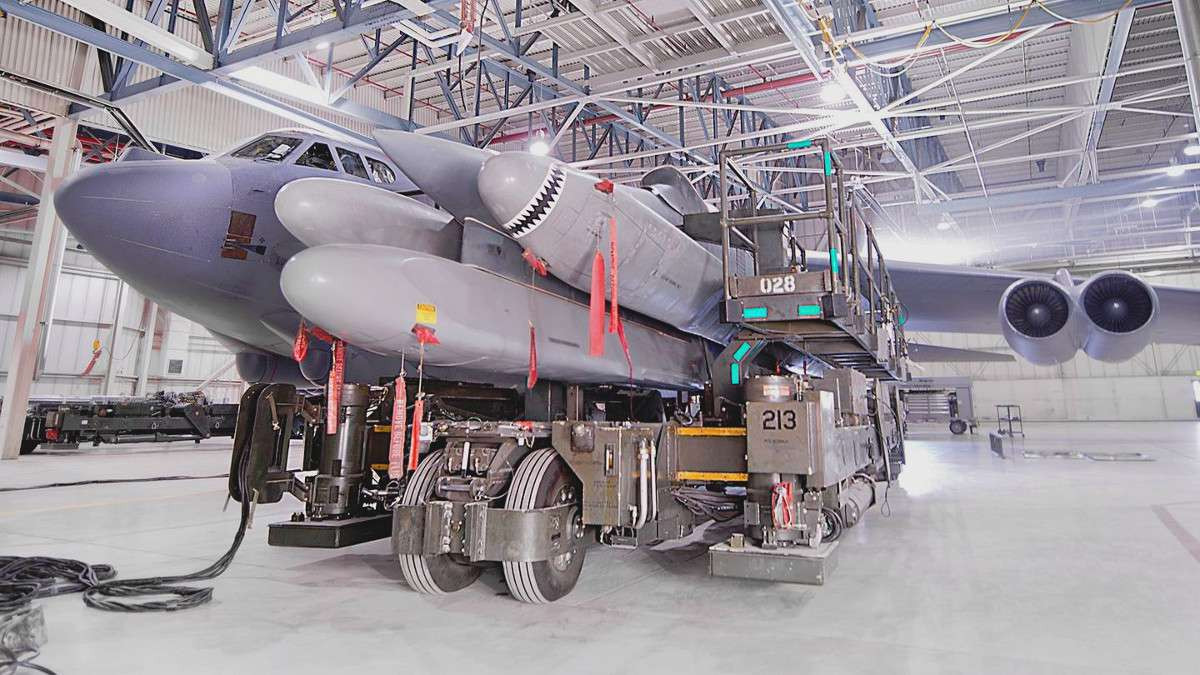
Doing so gives both parties an entirely new period in which to negotiate new provisions to the existing deal or an entirely new follow-on deal and help stave off a major arms race. It also preserves the last remaining major bilateral arms control agreement between the two countries, following the collapse of Intermediate-Range Nuclear Forces Treaty, or INF, in 2019 and the U.S. government’s withdrawal from Open Skies in 2020.
Continued diplomatic engagement on New START could potentially provide a springboard for further discussions on arms control and related issues. Last year, Putin had already proposed limiting where Russia could deploy missiles that had violated the INF, including assurances that they would not be placed in the country’s geographically separated Kaliningrad enclave, which is effectively one large military base on the Baltic Sea, in exchange for inspections of U.S. missile defense sites in Europe.
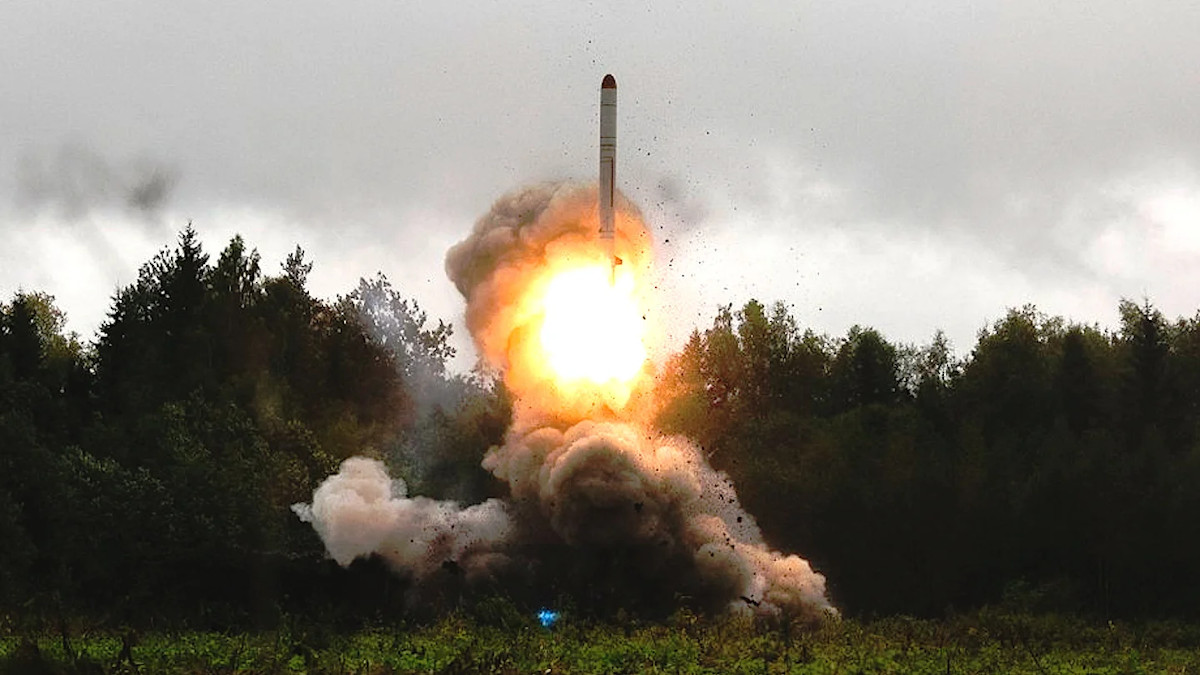
At the same time, there’s no guarantee that the Biden Administration will have success in negotiating any new arms control deals with Russia in the next four years. U.S.-Russia relations are, at best, cool, and it’s not clear when they might improve, even when just considering the litany of very serious issues listed in the White House’s readout of the first Biden-Putin call. With regards to New START, or any potential follow-on agreement, specifically, this five-year extension stretches into the next presidential term, which could complicate matters if negotiations drag on as they did during the Trump Administration.
All told, the extension of New START, which looks all but certain to be formalized in the coming days, is a positive development. It will now be up to the U.S. and Russian governments to make the most of this new space to negotiate, or risk finding themselves in the exact same predicament five years from now.
Contact the author: joe@thedrive.com
